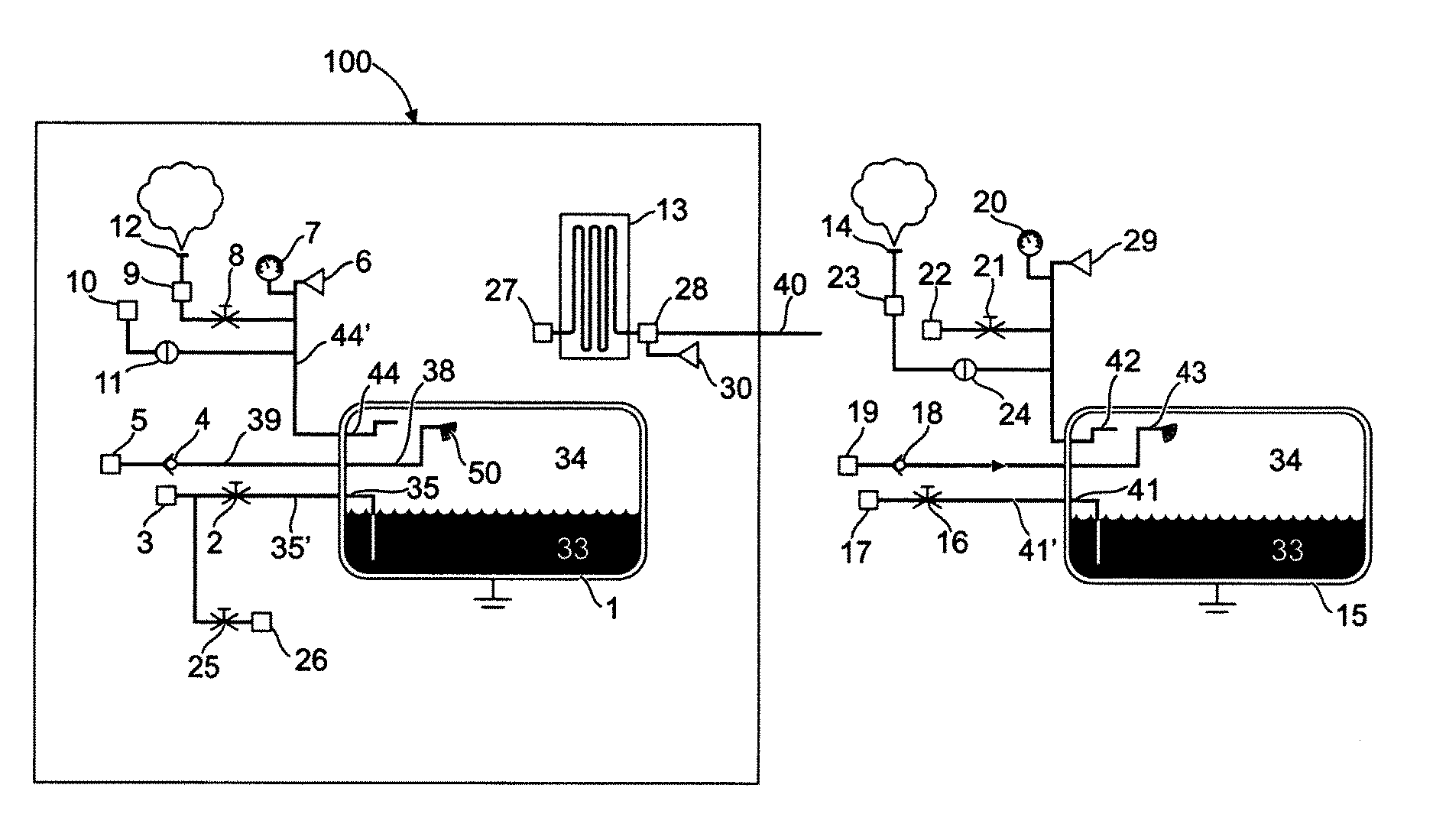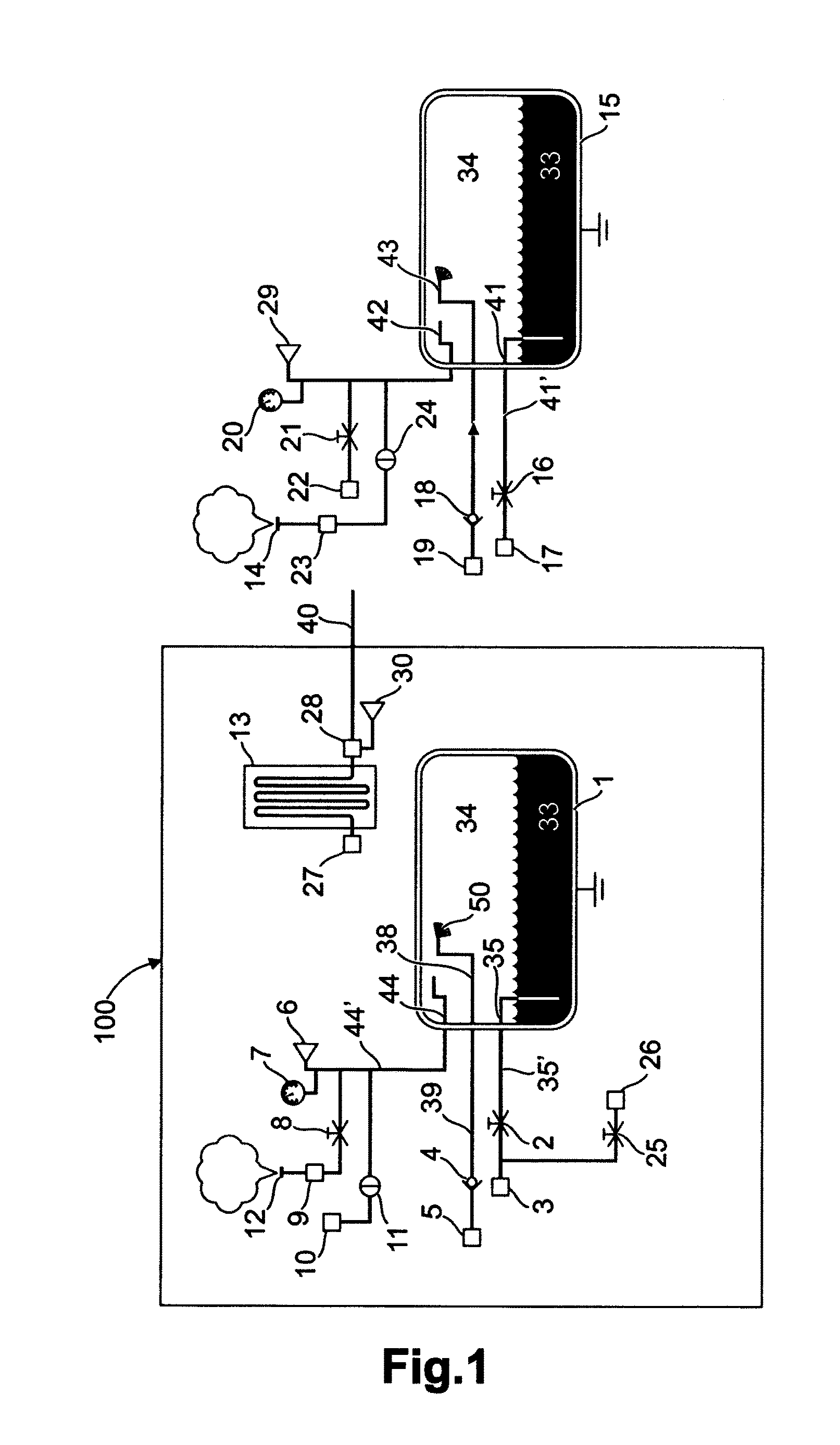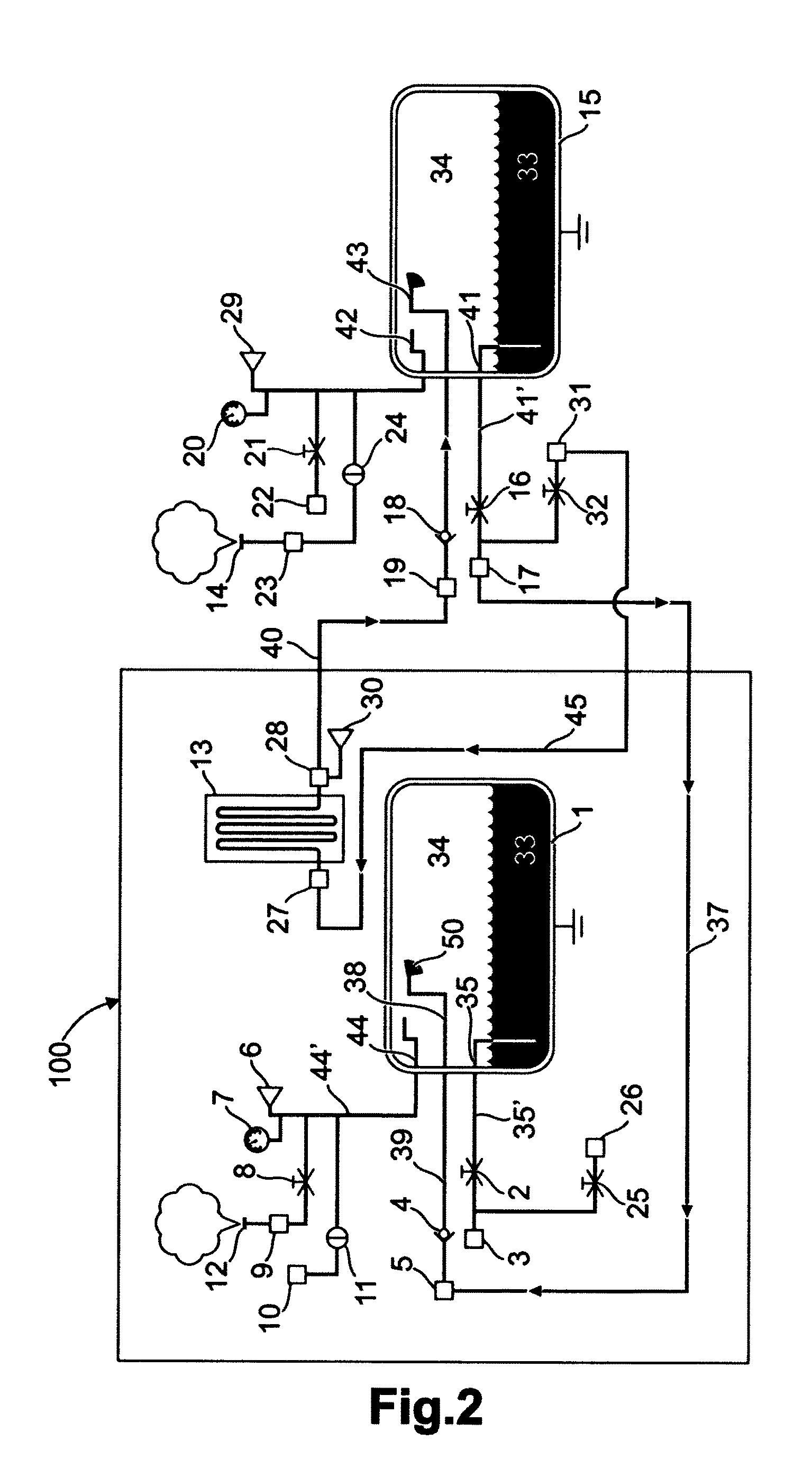System for draining and refilling cryogenic fuel in a vehicle tank
a vehicle tank and cryogenic fuel technology, applied in the direction of vehicle maintenance, container discharging methods, transportation and packaging, etc., can solve the problems of increased safety risks, flaming, fire hazards, etc., and achieve high safety, quick and efficient draining of the vehicle tank, and reduce the cost of vehicle servicing
- Summary
- Abstract
- Description
- Claims
- Application Information
AI Technical Summary
Benefits of technology
Problems solved by technology
Method used
Image
Examples
Embodiment Construction
[0059]FIG. 1 shows a tool 100 for draining and refilling a vehicle tank 15 for cryogenic fuel 33, wherein the tool 100 comprises a heat exchanger 13 and a cooling tank 1, said cooling tank 1 exhibiting an outlet 35 to a fuel outlet conduit 35′ having at least one outlet valve 2, said fuel outlet 35 being connectable to a first fuel conduit and a second fuel conduit via the outlet valve 2 and a connecting device 3. The cooling tank 1 comprises a fuel inlet 38, which is connected to a fuel inlet conduit 39 via a check valve 4. The fuel inlet conduit 39 exhibits a connecting device 5 for connecting the fuel inlet 38 in the shown draining mode. In this mode, the fuel conduit 40 is connected to the heat exchanger 13 via a connecting means 28. The fuel conduit 40 is also adapted for connecting to the inlet 38 of the cooling tank 1 via a connecting means 5.
[0060]Fuel which is passed into one of the tanks 1, 15 is injected into the upper portion of the tank, for example by means of a sprayi...
PUM
 Login to View More
Login to View More Abstract
Description
Claims
Application Information
 Login to View More
Login to View More - R&D
- Intellectual Property
- Life Sciences
- Materials
- Tech Scout
- Unparalleled Data Quality
- Higher Quality Content
- 60% Fewer Hallucinations
Browse by: Latest US Patents, China's latest patents, Technical Efficacy Thesaurus, Application Domain, Technology Topic, Popular Technical Reports.
© 2025 PatSnap. All rights reserved.Legal|Privacy policy|Modern Slavery Act Transparency Statement|Sitemap|About US| Contact US: help@patsnap.com



